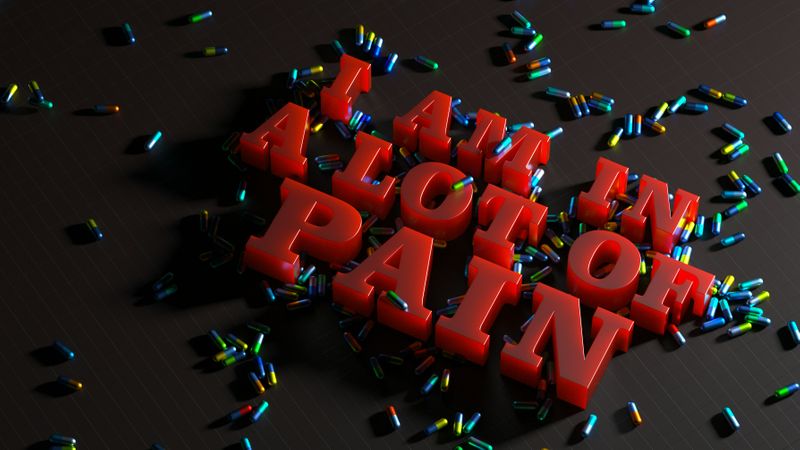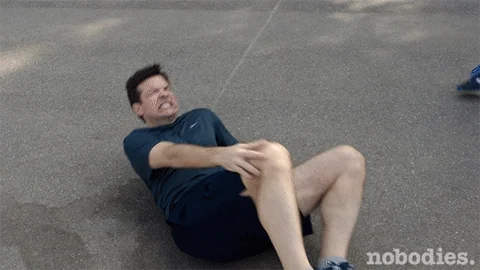
This logo isn't an ad or affiliate link. It's an organization that shares in our mission, and empowered the authors to share their insights in Byte form.
Rumie vets Bytes for compliance with our
Standards.
The organization is responsible for the completeness and reliability of the content.
Learn more
about how Rumie works with partners.
Describing your pain in a second language can be very difficult. It can even cause a lot of anxiety.
 Photo by Online Marketing on Unsplash
Photo by Online Marketing on UnsplashPain can come from many sources, but imagine that you were in a minor car accident.
Someone drove into the back of your car.
You hit your head on the steering wheel.
You're planning what to tell the doctor.

With a few specific words and phrases, you'll be able to tell the doctor about the pain you received from this accident.
Nouns and Verbs for Describing Pain
You'll need to complete this sentence: "I have a [type of pain] pain in my [body part]. The pain is [level of pain]."
But first, you'll need to describe the event that caused you pain with a few nouns and verbs.

The most common words for describing physical pain are:
wound: The damaged part of the body, or the action causing the damage. The "ou" part is pronounced like the "ou" in "you."
injury: This means the same thing as the noun "wound".
injure: This is the verb form of "injury". It describes the action causing the damage.
hurt: The act of causing or experiencing pain.
These words can be divided into nouns and verbs.
Nouns
I got a bad wound from the accident.
I got a bad injury from the accident.
Verbs
The accident wounded me.
The accident injured me.
My wound/injury hurts badly.
Quiz
You hit your head in the car accident. Which sentence could you say? Select all that apply:
"Hurt" can't be used as a noun. "Injures" must describe an action done by the thing CAUSING the damage.
Types of Pain
To help the doctor understand your pain, you need to be able to describe different types of pain.
 Photo by Tom Jur on Unsplash
Photo by Tom Jur on UnsplashImagine that the car accident has given you injuries like what you see in the picture above. Your forehead and nose are the most badly injured, while you have a minor injury on your right cheek.
Which of these types of pain do you think you would be feeling?
stabbing: A sharp, sudden pain that feels like being poked with something pointy.
throbbing: A rhythmic, pulsing pain that often feels like it's beating.
cramping: A sudden, tight pain caused by muscles contracting or tightening.
shooting: A quick, sharp pain that travels through a part of the body.
searing: A very intense, burning pain.
They can all be used to complete the sentence: I have a [type of pain] pain in my head. The pain is [level of pain].
Any of these words are possible, though "searing" and "cramping" are less likely.
Quiz
Use the picture and vocabulary above to help you complete this sentence: "I have a [type of pain] pain in my forehead."
The wound doesn't look like it was caused by something sharp, so it wouldn't be a stabbing pain. The wound doesn't look like a burn, so it wouldn't be a searing pain. The wound isn't on a muscle, so it wouldn't be a cramping pain. Most likely, the injured person hit their head in accident, so it's probably a throbbing pain.
Did you know?
This Byte was created by a volunteer professional that wanted to share this insight to help you succeed - no agenda, no cost.
Levels of Pain
You should also be able to describe how intense the pain is.
Pain can be ranked on a scale from 0 to 10. The vocabulary is ranked according to that scale, with 0 being no pain and 10 being maximum pain. Learn more by viewing the scale in detail.
mild = 1
minor = 2
noticeable = 3
moderate = 6
strong = 7
intolerable = 9
They can all be used to complete the sentence: "I have a [type of pain] pain in my head. The pain is [level of pain]."
 Photo by Markus Spiske on Unsplash
Photo by Markus Spiske on UnsplashImagine your fingers were also injured in the accident. Use the next quiz to test your knowledge of how to describe that pain.
Quiz
The picture above shows two fingers with some slight purple marks at their tips. What word would best describe this level of pain?
This looks like it doesn't hurt too badly, so "minor (2)" is an appropriate word for the pain. Stabbing is better for describing the type of pain, not the level.
Take Action
With the vocabulary above, you're now prepared to describe various types of pain you might experience to complete the sentence: "I have a [type of pain] pain in my [body part]. The pain is [level of pain]."

Continue to get practice with pain words and with other types of vocabulary.
This Byte has been authored by
Sam Whittaker
English Teacher
This Byte has been reviewed by
Akira Kobayashi
BSc, MD